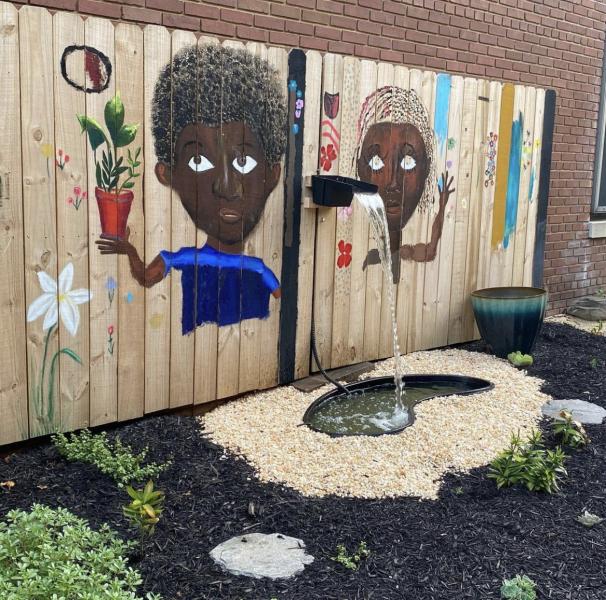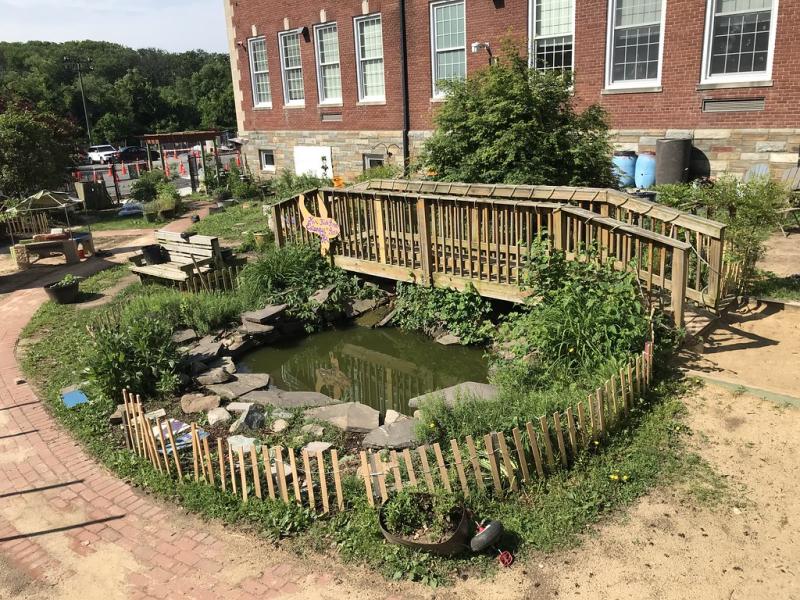This section focuses on sustaining and growing the school garden in the face of changes such as the turnover of key stakeholders, leadership, and changes to the physical space.

“I love our garden because it’s so peaceful and all of the stuff we grow, we eat and it’s always so good, it’s always so beautiful there’s always new stuff we learn. There are always very good hiding spots and last but not least, it’s (in) our friendly community.” - Bancroft Elementary School Student
Elements to Sustain and Grow a School Garden Program
Below are the essential elements to sustain and grow a school garden program:
- Evaluate and share impact: Below are a few important questions to consider. Seeking answers to these questions is a step toward using your resources (time, funding, etc.) more strategically.
- How do you know if your school garden is successful?
- How do you know if you are getting closer to achieving your goal(s)?
- How do you know when it is time to change or modify activities?
- These questions are best answered during the establishment of a new school garden through the creation of a project plan (see step 3, Create a Project Plan under the Establishing a New School Garden Program section of this guide). It is important to revisit these questions and strategic planning documents frequently throughout the program’s life cycle.
- Sustained funding: Ongoing funding for a school garden program is a challenge for many school garden programs. One study identified that an overall lack of funding was the most common barrier for school garden programs.
- Take Action:
- Review the District School Garden Funding Guidance and the Outdoor Learning Funding Resources documents for more information on funding sources and strategies to sustain funding.
- Take Action:
- Ongoing community engagement: The most successful school garden programs tend to be the ones that find ways to include both the school community and the community of people surrounding the schools.
- Take Action:
- Establish a Youth Farm Stand, which is a student-run farm stand located on school property and managed by school staff. For more information on engaging youth with entrepreneurship through gardens, see the Youth Entrepreneurship Cooperative Manuel.
- Encourage the school community to participate in District-wide events such as Growing Healthy Schools Month and Strawberries & Salad Greens Day.
- Establish the school garden as a composting site within the Community Compost Network.
- Learn more about how the school garden can be more integrated into the cafeteria by reviewing this Garden to Cafeteria document.
- Sign up to participate in the Shared Roots Program which connects community members with growing spaces, including school gardens.
- Watch a webinar from the School Garden Support Organization’s Community Integration Webinar Collection.
- Below are some additional tips on community engagement from District school garden coordinators.
- Establish a media liaison who will take photos, write media releases, and promote the garden, and have signed media releases on hand for students.
- Establish or use an existing communication platform that will inform parents and school staff about garden activities.
- Establish seasonal events to keep the community engaged. These may include student-led tours, garden produce tasting, seasonal festival, poetry reading, garden market, or a back to school garden cleanup workday.
- Invite community volunteers to workdays. This can be a wonderful way to get extra help and engage community members in your garden.
- Take Action:
- Maintenance: Gardens are living learning spaces, so caring for the physical aspects of a school garden including the basic design elements, necessary supplies, and equipment can be overwhelming, especially for new gardeners. Maintaining a school garden is commonly one of the biggest challenges for schools because schools underestimate the amount of time required (especially in the summer, when many students and staff are on break). The maintenance needs are determined by the garden design, time of year, and use. Some schools rely on partners that have experience in garden maintenance to provide support.
- Take Action:
- Review this Typical Activities to Run a School Garden to assist with clarifying garden maintenance roles.
- Review this Common Maintenance Tasks resource to learn more about maintenance tasks, as well as managing unique garden elements such as compost bins, hydroponic systems, season extension structures, and garden critters.
- Review the OSSE Planting Calendar and the School Garden Yearly Maintenance Schedule to forecast maintenance needs.
- Review the Winter Garden Tips from the District Department of Parks and Recreation.
- If you have a school greenhouse, review Greenhouse Manual: An Introductory Guide for Educators.
- Take Action:
- Garden Safety: School garden programs across the District provide students with hands-on education through growing, harvesting, and tasting produce grown in school gardens. Most school garden programs grow edibles and incorporate a tasting into their activities. The benefits of eating from a school garden are great, but like any urban outdoor space, can have a slight increase in risk and therefore require careful attention to safety. Below is guidance to help school garden programs reduce the risks associated with eating from the school garden.
- Review the School Garden Safety Guidance, which was developed by OSSE in partnership with DC Health.
- Identify the historical land use of your garden site by using the DC Historic Zoning Viewer Map. If your garden site was previously zoned for industrial use, be extra vigilant and test for all heavy metals in the soil.

“I found a tomato! I see carrots. ¡Es una zanahoria! I see a butterfly! It’s a leaf you can eat, I want to eat the leaf! I want to eat the chard! Who can find the peppers? Me gustan estos, ¡los como todos los días!”- H.D. Cooke Student


